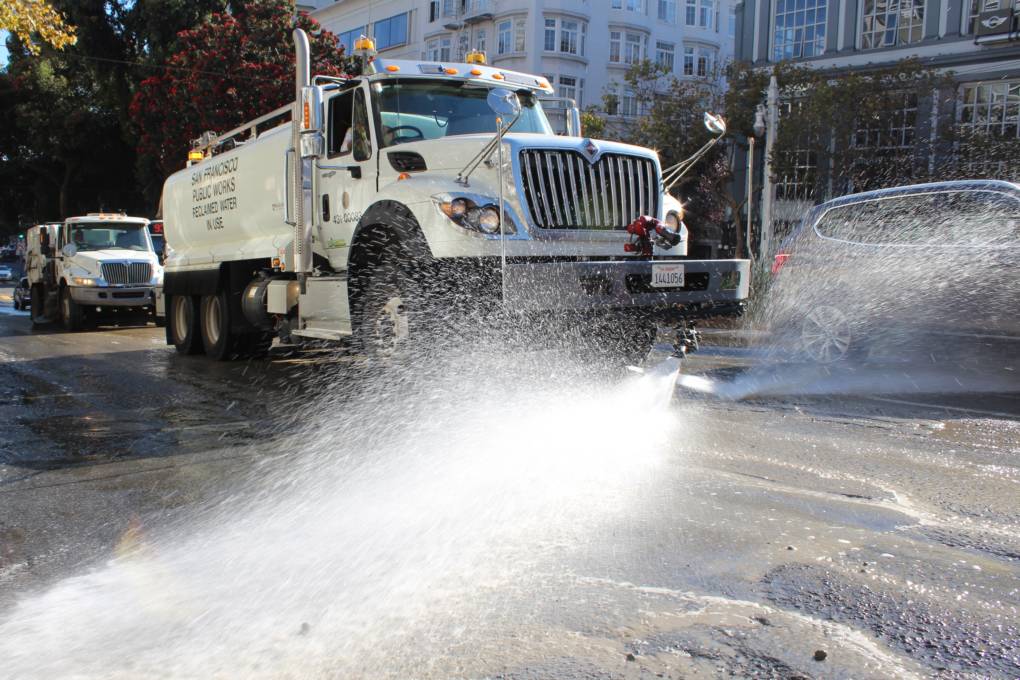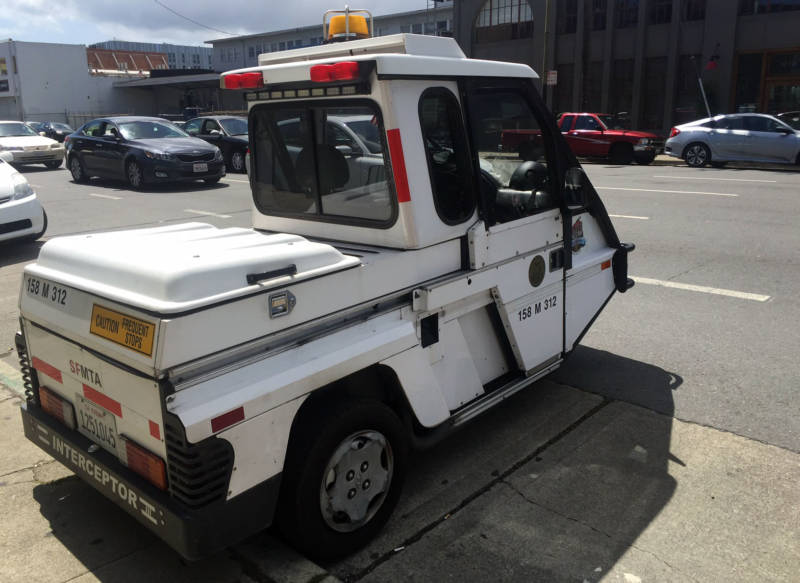Parking After the Avenue Sweeper Passes: Authorized or Not?

In the interest of all parking scofflaws and saints, we set out to find the official answer.
A street cleaning sign in San Francisco. (Penny Nelson/KQED)
Walking The Parking Enforcement Beat
I made my way to the San Francisco Municipal Transportation Agency, where I met up with traffic enforcement officer Denise Golden. She’s funny, smart and 100 percent no-nonsense.
She says that while people with her job may not be the most well-liked, “without us, it would be chaos. People would never move their vehicles. It would be definitely a problem.”
I asked her Ashley’s question and her answer surprised me.
“Once the street sweeper has gone by, we do permit the vehicle to park curbside,” she says.
So — it’s legal!
But, beware. There’s a hitch.
Signs Got You Stumped?
Is there another sign on the street you have a question about? Check out the SFMTA Parking Guide.
Golden went on to say that, in many cases, street cleaning is a four-step process. So, even if you think you’ve seen the street sweeper go by, you may have actually seen another vehicle.
The Street Sweeping Process
The first vehicle in the street cleaning parade is the broom support truck. A worker picks up large items off the street – things like big pieces of wood or an abandoned chair — and chucks them into this truck. They’re looking for anything that cannot be vacuumed up by the street sweeper.
 The parking enforcement officer typically comes just before the street sweeper. (Penny Nelson/KQED)
The parking enforcement officer typically comes just before the street sweeper. (Penny Nelson/KQED)
Next comes the street flusher, which is used mostly on commercial streets like Market and Mission. The flusher has jets underneath the truck that shoot water on the roadway, loosening grime and grit.
Third in line is the parking ticket officer, citing cars that haven’t moved.
Finally, the street sweeper comes along with big brushes and a large tube that vacuums up all the remaining trash on the street.
After that final step, you can legally park.
You’re welcome.
Wait, Four Steps? Really?
I caught a ride one morning with John Sheehan, one of the city’s street sweepers, as he cleaned his route in Noe Valley. He was surprised to hear I’d been told street cleaning is a four-step process.
On his route, he said, it’s usually a two-step process: The parking enforcement person moves ahead of him and then he alone cleans the street.

What do you wonder about the Bay Area, its culture or people that you want KQED to investigate?
Ask Bay Curious.
Turns out the cleaning process changes based on a variety of factors, like which street is being cleaned, which district the street is in, time of year, if there are special events and what’s been requested.
But whether it’s a two-step or four-step process, the bottom line is: Wait for that ticket buggy and street sweeper to roll by and you’re in the clear.



/https://blogs-images.forbes.com/richkarlgaard/files/2017/06/0606_lb-q10-doug-burgum_650x455.jpg)

